Amid a rapid, ongoing wave of E&P consolidation, Kodiak Gas Services closed an under-the-radar deal in April to acquire CSI Compressco and create the industry’s largest contract compression fleet.
With fewer potential customers churning out oil and gas amid fragmented oilfield services and midstream sectors, contractors realize they need to catch up to do more business with the biggest players producing record-high U.S. volumes.
Led by megadeals from Exxon Mobil and Chevron, the upstream sector completed nearly $250 billion in M&A transactions from the beginning of 2023 through March. That leaves the OFS space now playing chase with E&Ps that don’t seem interested in slowing the dealmaking race.
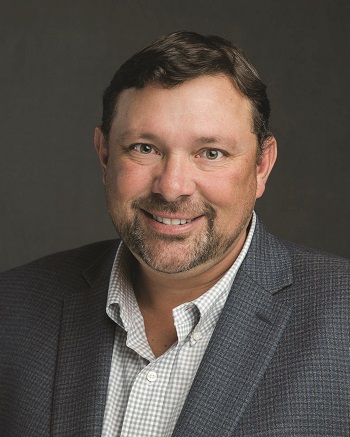
“I think scale does matter. We’ve got customers that are undergoing a consolidation phase,” said Mickey McKee, Kodiak president and CEO. “I wouldn’t say we have to keep up with them, but I think the smart thing to do is to keep up with ’em. You’ve got an industry right now that, for lack of a better phrase, has a tremendous moat around it because there’s not a lot of new private equity money coming in.”
Supply chains, labor and interest rates are all challenging, McKee said, so strategic acquisitions become more important. That’s partly why Kodiak underwent a rare energy IPO last year for enhanced growth potential.
“You look at the majors that are operating the Permian Basin, and a startup company can’t just go in with no safety history and work for ConocoPhillips or an Exxon Mobil,” he said. “With interest rates where they’re at right now, it’s really tough to grow a small private business. When we were that size, we were borrowing money for free, basically.
“And so these mom-and-pop-type shops are probably going to get paid lower multiples than they have been in the past,” McKee added. “That’s going to be really difficult.”
Earlier this year, James West, senior managing director for Evercore ISI, asked, “What happens when your customer base consolidates faster than you do?”
The answer: “You are deconsolidating and losing market power.”
“We need to see a response to some of the major activity that’s happened on the E&P side because we have fewer customers,” West said of the OFS sector. “They [E&Ps] are going to have more market power, and that’s not good.”
On the other hand, services consolidation has finally begun to pick up steam, West said, especially courtesy of industry-leading juggernaut SLB. In early April, SLB agreed to pay nearly $8 billion to acquire ChampionX and substantially boost its offerings in production chemicals and artificial lift. That came just days after SLB said it would buy Aker Carbon Capture for $380 million.
Other recent or pending deals include the merger of Innovex Downhole Solutions with Dril-Quip, ProPetro acquiring Par Five Energy Services, Drilling Tools International buying both Deep Casing Tools and Superior Drilling Products, Forum Energy Technologies scooping up Veriperm Energy Services, Precision Drilling gaining CWC Energy Services, Atlas Energy Solutions acquiring Hi-Crush in a sand consolidation, and Select Water Solutions picking up Tri-State Water Logistics and Iron Mountain Energy, among others.
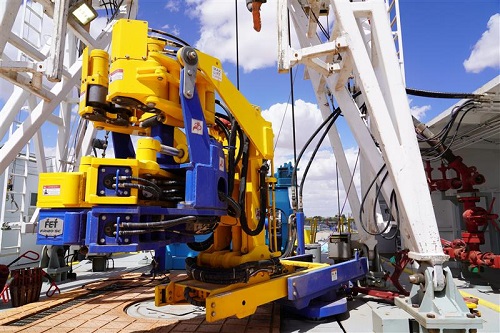
RELATED
Apollo to Buy, Take Private U.S. Silica in $1.85B Deal

“I think, usually, deals beget more deals. So, it wouldn’t surprise me if it unleashes some animal spirits here for people that want to get things done,” West said of OFS consolidation. “I think that the industry is coming to terms with where we are in this cycle and what the duration looks like in this cycle, and it feels it’s time to step up and make some strategic moves. And I would expect those to continue.”
The current trend is for producers to desire bigger but more streamlined, and that means fewer OFS companies. SLB, Halliburton and Baker Hughes may not consume each other, especially after the federal government intervened when Halliburton attempted a Baker Hughes takeover a decade ago. But everything else is on the table.
“More customers, as they get larger and more sophisticated, want to interface with fewer vendors when they want a well delivered,” West told Oil and Gas Investor. “They don’t want to talk to 20 different people. They want one guy to talk to and have that well delivered on time or faster, and on budget or, preferably, under budget.”
Start spreading the news
There is good news for the services sector, but it’s going to create winners and losers, executives said. The winners could see more predictable profits and steady growth while expanding market share. The losers may fail or be pressured to sell with little to no premium.

It’s an unusual conundrum because the number of producers is shrinking and activity is on the decline, but U.S. production volumes remain at or near all-time highs thanks to technology and efficiency gains. And, despite the ongoing energy transition, analyst projections recognize the need for more North American oil and gas for longer, including more crude exports and LNG to serve the world.
As such, Barclays reinitiated its E&P stock coverage in April, including an “Unapologetic oil and gas” message to hesitant investors.
Consolidation and pricing upside are big reasons for Barclays’ bullish sentiments, but that means less upside for a larger pool of OFS players. After all, consolidation leads to “plateauing of U.S. shale production,” which, in turn, helps with pricing.
“Sector consolidation has put more barrels in the hands of prudent public operators. We expect production growth from this group to slow down,” wrote Barclays analyst Betty Jiang. “After a flurry of M&A, we have also seen private activity slow down materially.”
The mantra is “Shale 4.0” with more consolidation, inventory duration and steady manufacturing mode to generate the most free cash flow and returns at modest capex.
”Capital discipline is here to stay,” Jiang added. “Value over volume has become the new norm, with management teams prioritizing return on capital and return of capital over production growth.”
A lot of this messaging sounds great to the biggest drillers, pressure pumpers and OFS providers that desire predictability and financially healthy customers. But it can also mean less business to go around.

Liberty Energy President Ron Gusek said in an interview that E&P consolidation creates wiser producers that, in turn, have
higher expectations for their services providers.
“That probably changes the market a little bit. I think you see some natural consolidation as a result of that,” Gusek said. “There will be some oilfield services providers who, ultimately, may not find a role going forward with these larger E&Ps. I think the number of those probably naturally shrinks and you see the world consolidate more around the bigger, maybe more vertically integrated oilfield services providers.
“I think that has people thinking about what their place in that is going to be,” he added. “That’s probably on its way. Maybe we’re in the third or fourth inning. I don’t know that we’re halfway through that today. There’s lots of opportunity out there. I think there’s lots of stuff for sale.”
Naturally, he counts Liberty among those best-positioned top players. Liberty was ahead of the curve at the end of 2020 when it acquired SLB’s North American hydraulic fracturing business, then followed with more vertical integration by buying the PropX proppants business in 2021.
So, Gusek values working closely with larger, more predictable E&Ps.
“That makes planning your business much, much easier, rather than having to navigate the ups and downs of maybe a slightly more intermittent scenario where you’ve got to line up two or three or four customers to share a rig or a frac fleet or whatever it is that you’re selling,” he said. “Of course, one job doesn’t end exactly when the next job’s going to start, and you compare that to these larger operators where you get this steady cadence of one pad after another. And, certainly, in our case, as a frac provider, that’s incredibly beneficial.”
Efficiency gains win out
That “cadence” is benefitting from greater efficiencies gained with drilling longer laterals and completing wells more quickly and simultaneously.
For context, the U.S. oil and gas rig count peaked at 2,026 back in November 2011 when oil prices were comfortably hovering near $100/bbl, according to Baker Hughes. Production trails activity levels, of course, but U.S. crude production had freshly hit 6 MMbbl/d in November 2011, less than half of current volumes generated with only 30% of the rigs deployed almost 13 years ago.
With drilling rig programs and completions strategies so different from that era, comparing rig count numbers is, if not apples to oranges, at least apples to applesauce.
The modern, post-pandemic peak occurred at 784 rigs in November 2022 and has steadily declined since, plunging more than 20% to 617 rigs as of mid-April. But U.S. crude volumes still were at the near-record of 13.1 MMbbl/d.
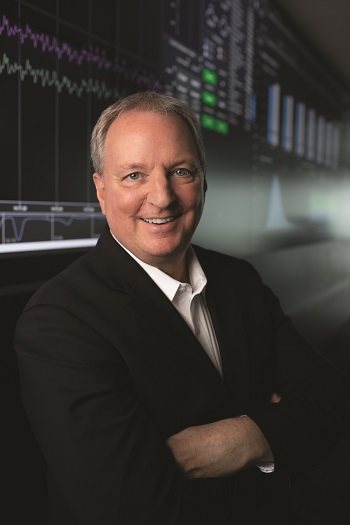
As much as drilling techniques and simul-fracs are helping operators produce more volumes with less activity, so, too, is consolidation playing a role as the more blocky, contiguous acreage allows for longer horizontal laterals to extend three or four miles, said Andy Hendricks, president and CEO of Patterson-UTI Energy, in an interview.
“What’s interesting about what they’re doing in the U.S. is they’re looking for acquisitions where they can pull lease and land holdings together where they can be more efficient, where they can connect better to their own infrastructure, where they can delineate their lease lines out in the Permian so they can drill longer laterals,” Hendricks said.
“And we hear different things from different E&Ps who are in the middle of their consolidation, not necessarily closed on their acquisitions yet,” he said. “Some of them are saying, ‘Yeah, as soon as we get our arms around this company, we can redraw some of these lease lines. We can drill longer laterals. We’re going to accelerate our activity.’ You’ve got others that are saying, ‘Well, we’re going to pull it all together. Then we’re going to maybe take a pause.’ So, different, not a pause in activity, but a pause in growing activity. They’ll still stay busy. It really depends on what the E&P’s strategy is for their acquisition.”
These trends mesh with Patterson-UTI’s decision last year to acquire NexTier Oilfield Solutions in a merger of near-equals, and then to further scoop up Ulterra Drilling Solutions.
Hendricks elaborated that the lower activity trends are tied to efficiency and capital discipline. Much of the E&P consolidation wave is fresh and many of the deals, including the biggest ones, have not even closed yet. The consolidation impacts will begin to come late this year and into 2025.
Luca Zanotti, the U.S. president for Tenaris, largely agreed. He said he looks forward to operators pivoting to predictable manufacturing modes, because that fits nicely with Tenaris’ role as an oil country tubular goods (OCTG) manufacturer.

The concern is waiting to see whether the smaller E&Ps and the sellers ever return to higher activity levels, including whether the selling management teams return with new startups at all, Zanotti said.
But Hendricks is confident those teams will come back, especially as the larger consolidators pivot to sell non-core acreage in the months ahead.
“You’ve got teams of E&P execs today that are working those deals to try to pick up the pieces that fall out of the large acquisitions,” Hendricks said. “That means more drilling rigs are going to go to work on their properties. There’s a lot of moving pieces. It’s not just two big companies coming together. Sometimes, you also have to consider what falls out of those large consolidations to experienced E&P execs who will drill and bring value to those properties.”
Despite the lower rig activity, Zanotti said, Tenaris is balanced out by more drill pipe, casing and tubing being used in each well.
“The number of days needed to ready wells is decreasing over time, and laterals are much longer,” he said. “Our estimation is 650 rigs today are equivalent to more or less 950 rigs in 2019. This is the kind of efficiency that the industry has in terms of pipe consumption. This is also enabled by the fact that we develop new technologies, new connections that are easier and quicker to run. And they can allow longer horizontals, longer laterals.”
Zanotti said he would like to see more consolidating in the OCTG space, apart from the pending merger of Nippon Steel and U.S. Steel, but that it is challenging because 50% of the OCTG products consumed in the U.S. are imports, and the foreign players play by uneven tariffs. While Luxembourg-based Tenaris is not a U.S. company, it manufactures much of its OCTG products in the Houston area.
Spreading overseas and subsea
Apart from issues with foreign players, the OCTG space is one of the most consolidated within the realm of OFS. So is the world of high-spec drilling rigs and, after more recent deals, pressure pumping, according to Evercore ISI.
But other areas remain much more fragmented, including rig equipment, wireline services, inspection and coating, artificial lift, specialty chemicals, sand and more.
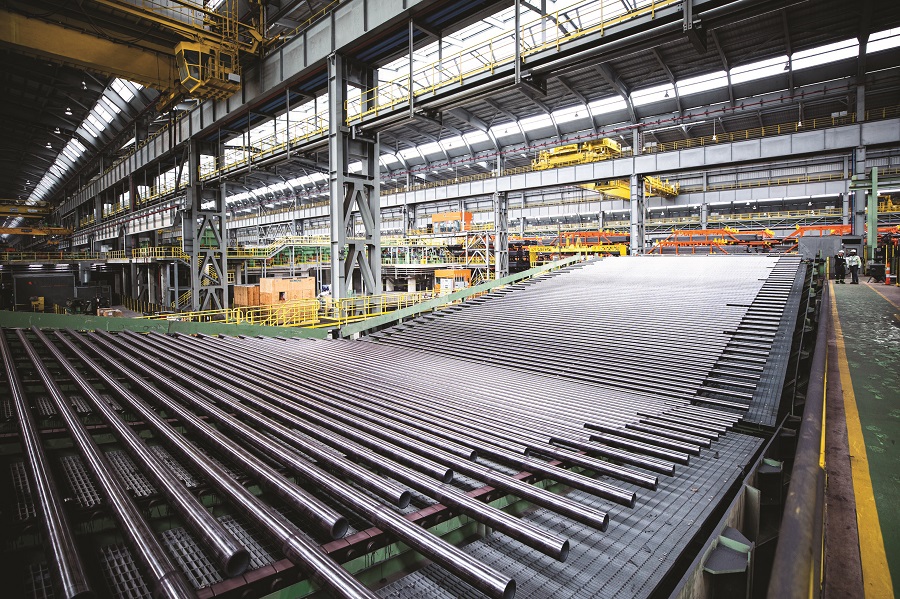
There just isn’t always a clear path in those areas because of the potential lack of buyers and the growing absence of private equity in the OFS space, Hendricks said.
He is, however, quite bullish on the consolidation occurring in completions, especially the role he’s played. NextTier was formed through the combination of C&J Energy Services and the Keane Group in 2019. Today, NexTier is newly part of Hendricks’ company.
“Now you’ve got a completion pressure pumping market that’s showing almost as much discipline as the drilling rig market, and that’s really positive for the shareholders of those companies,” he said.
Despite Hendricks’ optimism on continued U.S. growth, part of the consolidation trend also is about embracing greater potential for international upside amid higher crude pricing. That was a big factor in Patterson-UTI’s Ulterra acquisition.
About 30% of Ulterra’s revenue is overseas, especially in the Middle East. Ulterra is currently expanding a drill bits manufacturing facility in Saudi Arabia to do more business with Aramco and other regional players.
That global vision also factored into SLB’s acquisition of ChampionX, especially the ability to use SLB’s breadth to deliver ChampionX’s products and services around the world, said SLB CEO Olivier Le Peuch in a conference call.
“I believe that the market and the strategic priority of our customer is increasingly turning toward production and recovery,” and SLB’s goal here is to “address this to scale and provide integration capability there the same way we do across the rest of the life cycle.”
Arguably the most fragmented space is in oilfield tools and equipment. And that’s where President and CEO Wayne Prejean wants his Drilling Tools International to emerge as a consolidator in the U.S. and internationally.
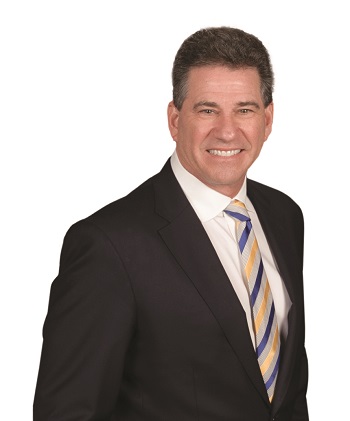
DTI went public last year when it merged with a special-purpose acquisition company, called a SPAC, and has been on a tear since, acquiring Deep Casing Tools and Superior Drilling Products this year. Prejean values scale and product and geographic diversity. But the deals still have to make sense.
“The right strategy is not to do a smash and bring companies together just for the sake of consolidation,” Prejean said. “But to instead focus on a particular space or segment or specialty, and make sure you have all the portfolio of tools or products or services or technologies that fit within a certain culture. You can more efficiently execute in that family of tools as opposed to just being a purveyor of all sorts of things.”
Companies not only need to consolidate, he said, but they also must scale up in terms of machine learning and analytics to offer the most efficient services. Small, local OFS firms often cannot offer that.
“You have to run your business now and be efficient off of data-centric, capital allocation decisions, not just with good old-fashioned Johnny Hustle experience,” he said, arguing that DTI will continue to acquire.
Likewise, Forum Energy Technologies in January closed on the acquisition of Canada-based Variperm Energy Services for nearly $200 million to offer more downhole technology solutions and a greater geographic footprint.
“Consolidating producers are going to find efficiencies in their capex spend and, in the U.S., they’re going to drop rigs and frac crews,” said Forum President and CEO Neal Lux. “So, one plus one is less than two on the activity side. For a small company, that’s more challenging.
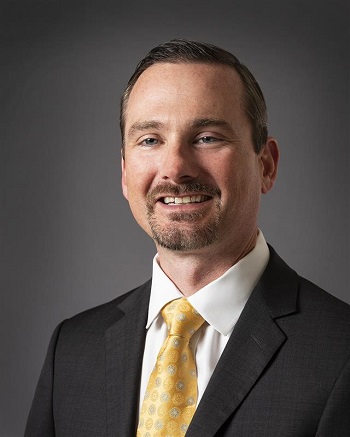
“While we may get fewer frac crews and rigs, the ones that are working are burning through their equipment at a much faster rate than before,” Lux added. “That’s where FET comes in. Our products and solutions are meant to increase the efficiency of our customers’ operation. So, we’re there helping our customers make their equipment last longer.”
The offshore sector, on the other hand, has seen slow, but steady OFS consolidation in recent years amid weaker activity and underinvestment. The big three drillers—Transocean, Noble Corp. and Valaris—have all helped, buying up Songa Offshore, Ocean Rig, Pacific Drilling and Maersk Drilling from 2018 through 2022. Valaris emerged in 2019 through the combination of Ensco and Rowan Cos.
But there are plenty of subsea sectors that remain fragmented, including companies that operate in the shale and deepwater realms. One brand-new, but pending combination in both the onshore and offshore space is the merger of Innovex Downhole Solutions and Dril-Quip to create the renamed Innovex International.
Innovex formed in 2016 through the triple merger of Antelope Oil Tools, Team Oil Tools and Isotech. Backed by AmberJack Capital Partners, Innovex continued to be acquisitive, especially during and after the pandemic, scooping up Rubicon Oilfield International, Applied Oil Tools and Pride Energy Services in recent years.
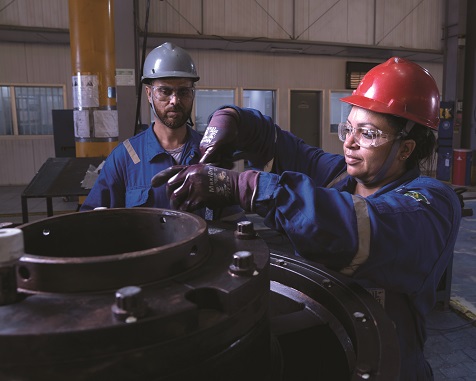
But the biggest deal was saved for March with the roughly $800 million merger of near equals with Dril-Quip. Formally, Dril-Quip is acquiring Innovex. But, in reality, Innovex CEO Adam Anderson will take over as CEO of the renamed Innovex to be publicly traded under the “INVX” stock ticker.

“The OFS industry has historically been quite fragmented,” Anderson said. “However, in the case of Innovex and Dril-Quip, we tend to operate in product and service offerings that have a ‘big impact, small ticket’ dynamic. Our products represent a relatively small part of the cost of the well but have an outsized impact on the performance of the well. Consequently, our customers are much more focused on product performance than price. So, our businesses have not been as susceptible to the fragmentation that is present in other OFS product and service offerings.”
As the shale boom took off more than a decade ago, so did OFS fragmentation for services, steel, labor and more, said West of Evercore ISI. As shale matures, so many players simply aren’t needed any longer.
The message is to scale up or differentiate yourself with disrupting or upgraded technology. If that’s not possible, bluntly stated, the future isn’t bright.
“If you’re not in the financial position to be able to do that—whether it be frac or drilling rigs or something like that—to meet that next-generation demand, ultimately that’s a tough spot to be in given a potential sunset for the technology that you bring to the table,” said Gusek of Liberty. “Consolidating a smaller player whose technology or frac pumps are a past generation just doesn’t make a ton of sense.”
Recommended Reading
Aris CEO Brock Foresees Consolidation as Need for Water Management Grows
2025-02-14 - As E&Ps get more efficient and operators drill longer laterals, the sheer amount of produced water continues to grow. Aris Water Solutions CEO Amanda Brock says consolidation is likely to handle the needed infrastructure expansions.
How DeepSeek Made Jevons Trend Again
2025-03-25 - As tech and energy investors began scrambling to revise stock valuations after the news broke, Microsoft Corp.’s CEO called it before markets open: “Jevons paradox strikes again!”
Halliburton, Sekal Partner on World’s First Automated On-Bottom Drilling System
2025-02-26 - Halliburton Co. and Sekal AS delivered the well for Equinor on the Norwegian Continental Shelf.
E&P Highlights: March 3, 2025
2025-03-03 - Here’s a roundup of the latest E&P headlines, from planned Kolibri wells in Oklahoma to a discovery in the Barents Sea.
Pair of Large Quakes Rattle Texas Oil Patch, Putting Spotlight on Water Disposal
2025-02-19 - Two large earthquakes that hit the Permian Basin, the top U.S. oilfield, this week have rattled the Texas oil industry and put a fresh spotlight on the water disposal practices that can lead to increases in seismic activity, industry consultants said on Feb. 18.
Comments
Add new comment
This conversation is moderated according to Hart Energy community rules. Please read the rules before joining the discussion. If you’re experiencing any technical problems, please contact our customer care team.




